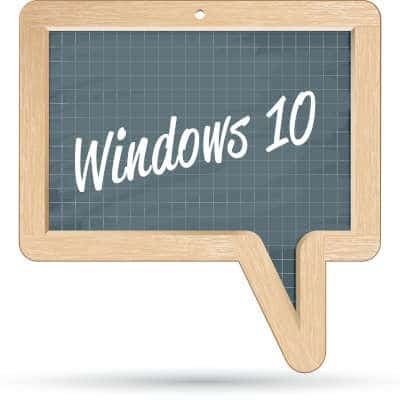A list of your key contacts One of the most important elements in your business continuity plan is a list of all your important contacts who should be informed of the disaster. This can include all your C-level execs, HR managers, IT Manager, client facing managers, etc., A comprehensive list of your IT inventory Your business continuity plan should contain a list of all the softwares, apps and hardware that you use in the daily operations of your business. This list should identify each of those as critical or non-critical and mention details pertaining to each of them such as The name of the app/software Version/model number (for software/hardware) Vendor name and contact information for each of them Warranty/support availability details Contact information for customer support for these hardware/apps Frequency of usage Backup information Data backups are critical to your disaster recovery and so your business continuity plan should include information about data backups. It should mention how often data is backed up, in what formats and where. It should also mention what data backups are available–ideally, you should be backing up ALL data already! What’s your Plan B? Make sure your business continuity plan lists a backup operations plan that will come into play in the event of a disaster. Examples include alternative workflows such as options to work remotely or to allow employees to bring their own devices to work (BYOD) until the time regular business premises or systems are ready. Floor plans and location Your business continuity plan should also include floor plans of your offices with the exit and entry points clearly marked up, so they can be used in the event of any emergency. It should also mention the location of data centers, phones, key IT systems and related hardware. Process definition Make sure your business continuity plan defines the SOPs to be followed in the event of an emergency. Think business continuity planning is too complicated? Don’t give up! A lot of SMBs, don’t create a business continuity plan thinking it is too much of a hassle. But this can prove fatal to your business later. A qualified MSP can help you understand business continuity planning and even help you create a business continuity plan that’s best suited for you..
However, despite these views, most people are far too lax when it comes to their own security. Let’s take a closer look. Consumers on Businesses and Their Data Practices In a recent report from advisory firm KPMG, the results of a survey that asked American consumers about their expectations of corporations and the privacy of their collected data were revealed. These results showed a few concerns very clearly, while revealing that not all respondents were fully aware of today’s most pressing cyberattacks. 86 percent of respondents to the survey felt that their data privacy was a rising concern. 70 percent claimed to be “generally familiar” with how companies collect their personal data, while 64 percent were familiar with how it was used and stored, 63 percent say they understand how it is protected, and 57 percent say they know how it is sold. Having said that, 68 percent don’t trust these companies to sell this data ethically, 54 percent don’t trust it will be used ethically, 53 percent don’t feel it will be collected ethically, and 50 percent don’t trust these companies to protect their data sufficiently. Most consumers are concerned about the theft of their social security number, with 83 percent of respondents identifying this concern. Following closely behind come the 69 percent worried about their credit card numbers. Surprisingly, only 16 percent are concerned about the theft of their medical records. Data Practices Amongst Consumers While this sounds like a decent start, the survey’s results showed a bit of hypocrisy. Most users agreed that repeating passwords, saving credit card information to a website, and using public Wi-Fi are risky behaviors, but more than 40 percent of them did these things anyways. 61 percent neglected to use all available tools to secure their accounts, as well. What We Can Learn It doesn’t matter if it’s your data at stake, or your business’… your highest priority needs to be your security. In another study, this one conducted by Harvard Business Review Analytic Services, it was shown that almost half—46 percent—of consumers surveyed had stopped doing business with a retailer because of issues with that retailer’s privacy statement. Are you willing to let half of your client base abandon your business? It just goes to show that, from the consumer’s perspective, it is our responsibility to make sure that companies are accountable for the data they collect. From the business standpoint, it shows that data security is something that can’t be slapped together or neglected. Is ensuring data security simple? Far from it… but when compared to what you risk otherwise, it’s a no-brainer. SRS Networks is here to help. We can help you to implement the security solutions and processes that will help protect all your data. To learn more, or to get started, call our team at (831) 758-3636 today.
It helps retain clients As a business, if you have problems functioning, it will definitely affect your clients. For example, if your servers are down or your supply-chain mechanism is affected or your delivery process breaks, you won’t be able to fulfill your promise to your clients. Even worse, in some situations you may not even be in a position to communicate about the crisis to your clients adding to their frustration. A business continuity plan addresses these issues beforehand and can help reduce client dissatisfaction. Salvaging brand image and reputation There are certain events that end up affecting only your business. For example, ransomware attacks, virus attacks, data leaks, etc., Having a business continuity plan that caters for such events can be a blessing in times of such crisis. Minimizing revenue loss A business continuity plan can minimize the revenue losses that occur as a result of a crisis that interrupts your business operations. In short, a business continuity plan helps minimize the impact of the crisis on your client relations, your brand image and your revenue by equipping you with a plan to handle the situation better.
Boost Engagement with Responsibility The experience that participants of an in-person meeting have is naturally going to be very different than it would be in a remote meeting. The natural flow of conversation is interrupted by the limits of the very tool that enables the conversation to take place at all. This can lead to inconsistent participation and side conversations taking place… bad enough in person, but debilitating to a remote session. Preparing an agenda ahead of time and giving each participant something that they will be responsible for during the meeting can help to minimize the chances of this. Streamline Your Meeting Just as is the case in person, a remote meeting that involves too many people can be counterproductive and ineffective when collaboration is the goal. With an overly large group, there are just too many potential distractions to derail your efforts. Lagging technology and excessive background noise can swiftly diminish a meeting’s value, so to minimize the chances of this happening, resist the urge to pack your meetings and stick to those whose presence is essential. This also helps to add to the engagement that participants can have, as a smaller group offers more opportunities to speak. Disable Muting When someone has muted themselves during a remote meeting, they have effectively disengaged from the conversation. Consider it: by muting themselves, they can no longer contribute, and there’s the potential that they could allow their attention to wander more easily. While briefly muting can help to minimize interruptions, it should not be sustained longer than necessary when meeting. How have your remote meetings gone? What have you done to make the most of them? Share your approach in the comments!
While a business continuity plan cannot completely safeguard your business from all these events, it can certainly minimize the damage inflicted on your business. Top business consultants urge their clients to develop a business continuity plan as they consider it a part of the best practices for running a business. A business continuity plan can make the difference between survival and shutdown of a business during a crisis situation. What is business continuity planning? Business continuity planning is the process of creating a blueprint that helps your business respond and recover effectively from an unforeseen mishap. As discussed before, the unforeseen event could range from natural disasters to pandemics, or even accidents that affect just your place of business like a fire or even a cybercrime attack directed at your business in particular–basically, any event that can paralyze your business. A business continuity plan serves as a step-by-step guide that you can follow during an emergency to keep your business running smoothly. True, a business continuity plan is not a sure shot method to survive a crisis, it won’t instantly eliminate the impact of the disaster, but it gives you the best chances of survival. If you are not sure of what a good business continuity plan entails , you can reach out to a reputable MSP to help you with the preparation and implementation of one.
As of this writing, nearly a quarter of all businesses are still using Windows 7 for one reason or another. Having chosen not to upgrade to Windows 10 (or didn’t want to upgrade their Windows 7-dependent software) when it was offered free, with fears that it would be more mobile device oriented, it seems these businesses don’t want to fork over the money to upgrade away from Windows 7. The problem with this strategy is that, as we mentioned at the outset, Windows 7 is no longer supported by Microsoft and is a major security problem. With no more security patches and updates, the OS will become filled with vulnerabilities, exposing business data. Is your business one of the whopping 47 percent of businesses that were still using Windows 7 when Microsoft retired it in January? Can your business afford to lose control over its data? What Makes Using Windows 7 Bad? Windows 7 was released over a decade ago in July of 2009. In that time, Microsoft has upgraded its OS multiple times. So, while its functionality and usability are decent, it is a ticking time bomb because Microsoft no longer patches or updates the software. It’s not hard to fathom hackers taking advantage of this as they try to steal data and access from the millions of people who still use Windows 7. FBI Says Using Windows 7 is Negligent Law enforcement is even mentioning that it’s a liability to use Windows 7. The Federal Bureau of Investigation released the following statement to their corporate partners in the private sector: “As time passes, Windows 7 becomes more vulnerable to exploitation due to lack of security updates and new vulnerabilities discovered.” Although they especially mention enterprises in the release, it’s not just major corporations that have something to lose by using old and unsupported software. You wouldn’t buy a window that is already cracked, would you? Windows 7 is that cracked window. For companies that utilize legacy software that doesn’t run on Windows 10, it’s probably because there is a better version of that software, too. Besides, if you actually needed to run an old piece of software in order to do your job, there are cloud-based alternatives to run legacy software. There is simply no good reason to run Windows 7 on a machine that is connected to the Internet. What Should My Company Do? Plan your upgrade today. The IT professionals at SRS Networks can find you the hardware, software, and other technology resources to meet your business’ needs. Our technicians are versed in all manners of business technology and specialize in promoting a secure, efficient computing environment that can take your business where you want it to go. For more information about Windows 7, Windows 10, or any other technology question you may have, call us today at (831) 758-3636.
Cozy Bear The National Cyber Security Centre, located in the UK, recently shared that a group has been attacking organizations involved with COVID-19 vaccine research. These claims have been verified by authorities in the United States and Canada. Known as “APT29,” as well as “Cozy Bear” and “the Dukes”, the attackers level spear phishing attacks and make use of assorted exploits to gain access to their target’s systems. After this access has been obtained, malware known as WellMail or WellMess is released into the environment. Many experts are of the opinion that this is not the first time that APT29 has been active, either. The group is suspected of attacks against various organizations in healthcare, energy, and government, and is believed to be responsible for the 2016 hack of the Democratic National Committee. In response to this, the CSC has been trying to work with software vendors to ensure that vulnerabilities are patched. If these patches aren’t applied, cybercriminals can find the means to exploit these vulnerabilities and cause problems. A Spear Phishing Refresher We’re no strangers to discussions about phishing, simply because it is one of today’s most prevalent threats to network security. Many phishing attacks are sent randomly to a large group of targets, but spear phishing is a different animal. Instead of trying to exploit a lot of people for little payout from each, spear phishing requires careful planning and execution of a highly targeted attack against one person. This person is often seen as the weakest link in an organization’s security by hackers. With any luck, you won’t need to contend with phishing attacks from a major hacking group. That being said, it’s important that you and your team can identify a potential phishing attack and react appropriately. Here are a few basics to keep in mind: Always check the details. Many phishing attacks will display some subtle issue, either in the email address it comes from or some other detail. Make sure you pay attention for some of these warning signs. Proofread the message. Businesses want to put their best foot forward, so their correspondence is generally carefully edited before it’s sent out. If you receive a message with questionable spelling and grammar, exercise caution. Reach out. If you’re unsure of whether a message is legitimate or not, reach out to the sender through another means to confirm it if you can. For your business to avoid threats, being able to identify potential phishing attacks is only going to become more important. Find out how to train your team to spot them by reaching out to us. Call SRS Networks at (831) 758-3636 to learn more.
Here, we’ll discuss the concept of smart scheduling, and how your business can benefit from it. What Smart Scheduling Is Smart scheduling software solutions are typically used in industries that see a lot of fluctuations in consumer demand and are subject to considerable outside influence. This has given them a place in many industries, notably retail, as demand can rise and drop dramatically based on just a few factors. Smart scheduling solutions can assist a business to schedule its employees to match these varying needs, automating these processes to simplify your workload. However, if we want to apply these smart scheduling ideals to all industries, it’s helpful to consider it as more of a process than as a technology. Doing so just makes sense, as every business must deal with factors that can—and often do—have an impact on its operations. In this context, smart scheduling is just taking anticipated factors into account and adjusting our plans to accommodate them. It’s a fast food restaurant ensuring that it’s operating with all hands on deck when the factory next door breaks for lunch. In simple terms, it’s anticipating the conditions in your business and making the appropriate preparations. How to Schedule with Smart Scheduling in Mind Even if you aren’t using a dedicated solution meant to help you schedule “smartly,” there are a few ways that you can implement these principles. For instance: Consolidate Your Information—Assemble any information that you have that could impact your schedule, as this will help you to proactively prepare for any circumstances that may arise. For example, if your business is scheduled to be closed for a holiday but there are some large projects that need to be scheduled beforehand. Understanding what your team is currently assigned to and how those responsibilities measure up can help you make crucial decisions to ensure your critical tasks get done. Embrace Communication—Communication is going to be massively important for your operational success, so your schedule needs to communicate plenty of detail and context. These practices can also help empower your team members. Adopt a Scheduling Platform—There are many options now available for you to use as a scheduling tool. Finding one that simplifies your workload management and implementing it will benefit your entire operation. Whether you’re seeking out a solution to address your scheduling needs, or any other technology requirement your business has, SRS Networks can help. To find out more, give us a call at (831) 758-3636.
Reducing Hardware Costs Anyone that has purchased a server knows how expensive it is to purchase, set up, run, and support. With hosted VoIP, your business gets a powerful business phone system without having to go through the headaches and expense associated with installing new phone lines. Anyone who has ever run telephone wire from a distribution hub through the walls of a building knows that it can be quite tedious. The costs of setting up your own telephone system, even for a smaller PBX deployment, are substantial. With hosted VoIP, the capital investment is transformed immediately into an operational expense once you choose to make the switch. By utilizing your company’s existing broadband connection, hosted VoIP costs less and offers more than traditional telephone systems. For the business, one of the largest expenses for any telephone system is the minutes the phone is being used. Every traditional phone system carries costs for long distance. It’s unavoidable. Many times, the zones are very confusing and calls you wouldn’t expect to be made at premium rates, are. Even if you find ways to control your costs, your business is limited. By eliminating the recurring expense of long distance, VoIP is able to present more predictable service fees. Additionally, when you consider the costs that go into adding a line to your business and the costs associated with employee mobility, the flexibility and scalability of a hosted VoIP platform can reduce cost expansively. Mobility & Options The most valuable part of a hosted VoIP platform for the end-user is the ability for them to take their phone number with them wherever they go. With the soft phone feature, their smartphone becomes a work phone. This provides a level of mobility that every business should try to embrace in today’s digitally-heavy environment. Additionally, a hosted VoIP platform can offer a lot of additional features such as video conferencing, text and instant messaging integrations, and many more. The more features that a hosted VoIP platform can provide a small to medium-sized business, the more value they will get out of the platform. If you would like more information about VoIP or if you would like to know how SRS Networks can help you with your business’ communications, call us today at (831) 758-3636.
Windows 10 Microsoft has built what just might be the best operating system ever made. It can do almost anything, but since Microsoft pulled the plug on their smartphone lineup, and most of their other smaller offerings are nowhere to be found, the majority of devices that run Windows 10 are PCs. Microsoft gave the software away for a pretty long time and as a result more people are using that ecosystem than any other PC OS. With Windows 10, Microsoft was able to find a happy medium between the PC usability of Windows 7 and the mobile usability of Windows 8.1. As a result, several of the best-selling laptops in the world feature Windows 10 and a touchscreen. With a billion people on the platform and actively using it, it sets consumers up for… Windows-as-a-Service Now that you are invested in the Windows 10 platform, you will be happy to know that Microsoft is, too. This may be the last version of Windows, but the delivery of Windows may mean something completely different going forward. Microsoft has admitted that they are going to take OS deployment in a new direction; changing forever the way they will brand and support the product. Enter Windows-as-a-Service, where Windows 10 comes with your Microsoft Account. Most PCs come with Windows 10 installed already, but today, Microsoft is offering services that will provide you with a Windows 10 experience, hosted in the cloud. Now, computers that run alternate operating systems can still get a virtual Windows 10 experience. The as-a-Service Model to software is nothing new. Everytime you watch a movie on Netflix, listen to a song on Spotify, or use Microsoft 365 apps online, you take part in the as-a-Service revolution. Microsoft is bringing that model to their OS. Essentially, they are going to continuously update the current Windows platform. In fact, we just got another major update for the platform in May 2020. So, the question remains: Is Windows 10 the last version of Windows? Not really. For more great technology-based information weekly, check back at our blog.










